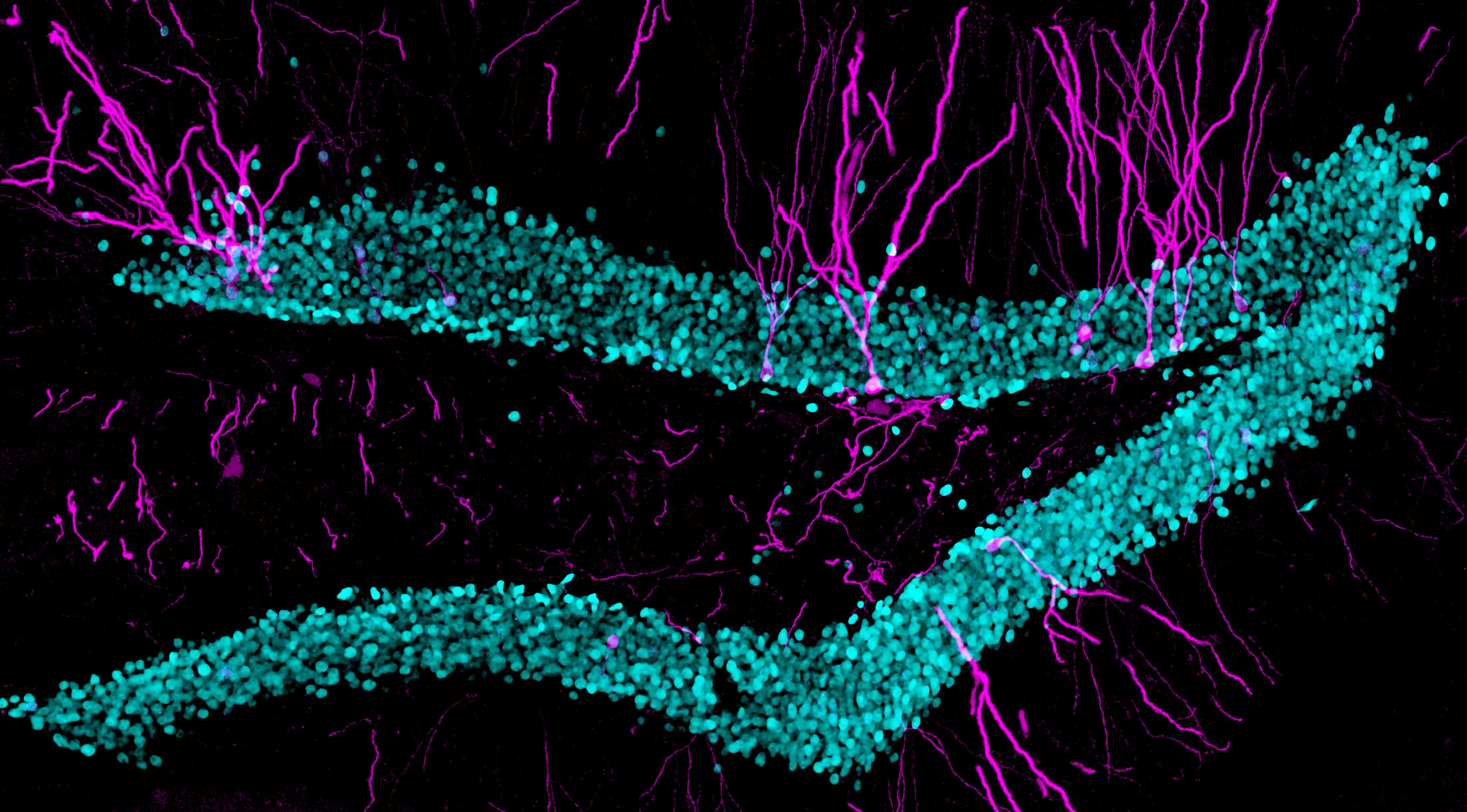Adult-born dentate granule cells promote hippocampal population sparsity.
Most nerve cells in the brain are generated before birth. However, new cells are produced throughout adulthood in the hippocampus, a brain region important for memory. By recording electrical activity from the hippocampus, we found that adult-born cells control the timing, coordination and selective activation of other cells during learning and memory.
The dentate gyrus (DG) gates neocortical information flow to the hippocampus. Intriguingly, the DG also produces adult-born dentate granule cells (abDGCs) throughout the lifespan, but their contribution to downstream firing dynamics remains unclear. Here, we show that abDGCs promote sparser hippocampal population spiking during mnemonic processing of novel stimuli. By combining triple-(DG-CA3-CA1) ensemble recordings and optogenetic interventions in behaving mice, we show that abDGCs constitute a subset of high-firing-rate neurons with enhanced activity responses to novelty and strong modulation by theta oscillations. Selectively activating abDGCs in their 4-7-week post-birth period increases sparsity of hippocampal population patterns, whereas suppressing abDGCs reduces this sparsity, increases principal cell firing rates and impairs novel object recognition with reduced dimensionality of the network firing structure, without affecting single-neuron spatial representations. We propose that adult-born granule cells transiently support sparser hippocampal population activity structure for higher-dimensional responses relevant to effective mnemonic information processing.

2024. Neuron, 112(22):3768-3781.e8.
